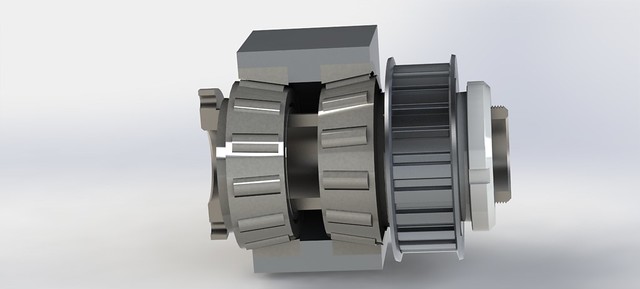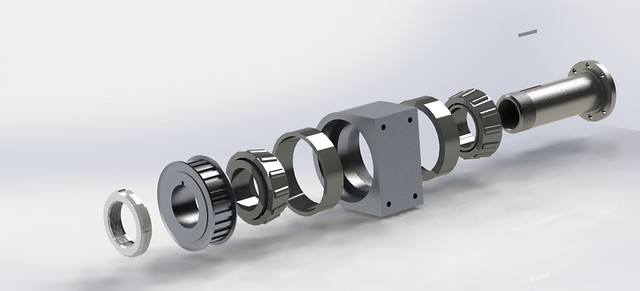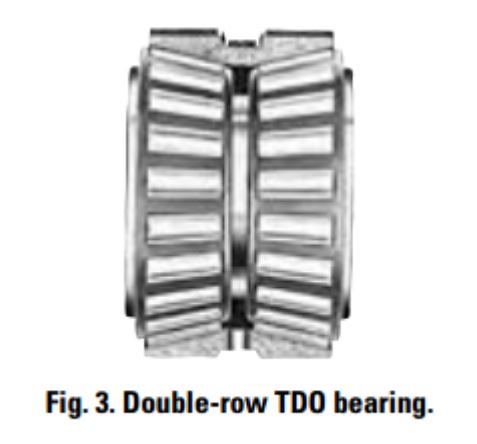Thread: Rotating Ballnut - design ideas
Hybrid View
-
12-10-2016 #1
Impressive nuts! I just took a look at your e-moto webpage quickly too , wicked. Great project and racing at Isle of Man wow respect that place is nuts.
Hey I have a large router that is running well but I want to upgrade the main screw to a fixed screw rotating nut design. The screw is 40mm dia 10mm pitch and 3m long so its heavy. Running a 940W AC servo and a Grantite Devices VSD-XE servo drive, and 80VDC supply, I'm getting good response now with 8m/min velocity and about 400mm/s/s acceleration. This took a long time for me to work out the servo tuning but I got there in the end. I'd like to remove the rotating mass to improve my accelerations. The gantry it moves weighs around 150KG I estimate.
So I am wondering are you interested in building me a ball nut for this? Happy to pay market rates of course and if it helps fund any of your emoto projects then all the better. Please contact me if this is interest to you.
Below is my final servo response I got recently which I am really stoked about it, but to speed up my jobs I really want to up the accelerations.
cheers
Richard
-
23-10-2016 #2
You can certainly say that of the riders!
With that size ballscrew then you do have a problem with the rotating inertia, not so much the 150kg gantry. Can you measure the ballnut - approximate it as cylinders, then we can work out the inertia of the ballnut compared to the ballscrew to see what you could gain by rotating the nut.
My PhD studies are taking up a lot of time at the moment (need to catch up after all the racing!), but I do intend to have time to finish some rotating nut assemblies soon.
What else can you plot from your system - can you plot the motor torque in addition to the speed response? If so, that's another way to work out the inertia and get better insight into how the system will behave.
-
25-10-2016 #3
I am too scared to watch the racing almost, its impressive riding nothing else is close really is it, but scary when a rider is badly hurt or killed, seems to be all too common.
I'll measure up the ball nut and screw and also try find the original part numbers and specs weights etc.
The PID loop tuning I struggle with, yes I can measure the currents I think , my Granite Devices VSD-XE servo drives have an inbuilt virtual oscilloscope that I use to measure the response with, to be honest the PID tuning I am very hit and miss with I can;t quite qork out what low pass filters I should use and why.......
I retuned the PID loops on both x and y on the weekend and its better but still I am sure there is room for significant improvement. whip of the screw is a problem too when I get over 600RPM approx. Thats a 10mm pitch per revolution screw (isthatthe correct terminology?) so thats a speed 6000mm/min , any faster and sometimes it whips and that really gives me the shits. I'm finding that small circle cuts say a 6mm end mill cutting a small 10mm dia helix has some error in the hole and I have to crank the speed back to around 1500mm/min for cutting (the timber) rather than running at higher speeds that I'd like to.
Anyway if you have time I would appreciate your guidance, keep on top of your studies thats top priority! Even if I can plagiarise your design and try build locally with some of your engineering input that would be greatly appreciated but if I can commission you to build one at the right price that works for us both then that's even better!!!
Funny I was a bit ambitious the last figures I quoted in my earlier post looked good on the scope but in real life cutting it was terrible!
Cheers
RichLast edited by richienz; 25-10-2016 at 02:38 AM.
-
05-11-2016 #4
This cheap tool looks good for the KM03 locknut used if you have 20xx screws and using KM03 locknuts both sides
Still looking for an inexpensive tool for the KM04 nuts / 25xx screw and KM05/30xx screws. If sb knows , just post it here. Otherwise most probably you have to make yourself one so you could tighten and adjust tension of your ball screws
table of locknuts for reference below, i use 2 each side so total of 4 per screw , locktite on thread, red paint to mark any movement, did not know at the time about washers:
Last edited by Boyan Silyavski; 05-11-2016 at 11:06 PM.
-
26-11-2016 #5
First post on this bulletin board; I enjoyed this thread...or at least what I had a chance to read using the spotty WiFi signal at work anyhow.
I find myself in need of a couple of rotating ballnuts for a 3000mm-long 2505 ballscrew, and have come across this older thread on the subject. I was inspired by the designs depicted here, and worked to duplicate/improve upon them when I became curious as to why angular-contact ball bearings were used instead of tapered roller bearings.
I'm trying to keep the unit as compact as possible and I suspect that the tapered roller bearings will help in that respect. The force on the hollow rotating shaft will be primarily axial, along the ballscrew axis with barely any radial load being applied by the tension of the timing belt/pulley.
I came up with the following design (sorry for the seemingly random view angles)--Any comments/input regarding it's viability?:



Thanks,
--MarkLast edited by SafeAirOne; 26-11-2016 at 09:32 PM. Reason: Typo/spelling
-
26-11-2016 #6
The bearings that we use here are angular contact ball bearings versus the roller bearings you have drawn in picture. Hiwin and other manufacturers use also ball bearings in their design. I dont know if you are aware of the fact, but for example my bearings and ball screw heat up quite seriously especially when i am doing some crazy fast trochoidal tool paths on wood. In the 20m/min region and good acceleration. Moving 200kg gantry obviously helps that.
The angular contact bearings must be separated at least 1x OD between, having in mind they are 45? degree i think. Obviously roller bearings could be much stronger in all directions load.
Whats the rating of that bearing? RPM?
I am asking my self, what are you trying to gain here? Why would you be braking the assembly to pieces? The motor alignment and ability to tighten correctly the belt while keeping that alignment is a crucial part of the design . Have that in mind. Any small imprecision on a 3 meter scale becomes big imprecision
-
27-11-2016 #7
Thanks for your input.
I didn't realize the bearing and ballnut/screw got significantly hot during machining. I suspect that this will be less of a concern for me as the type of machining I will do will not include much in the line of high-speed toolpaths and rapid moves in general will be at a minimum. I suspect the concern with heat here is in regard to maintaining cutting tolerances and repeatability, as the bearing and screw materials will handle the heat satisfactorily. Is this your understanding as well?
Of course minimizing the contact area and pressure between bearing and race will similarly minimize the generation of heat, which is where the angular contact bearings excel. There's not a whole lot you can do about the ballnut and the ballscrew interaction though.
These are 2788 bearings with 2720 cup. I just had a quick look at Timken's tapered roller bearing engineer's guide and didn't see any indication that the effective bearing spread (distance between bearings) was critical. In fact, I didn't even see where they made any spread recommendations for this type of bearing at all. Interestingly, I just saw that they make a Double Row Tapered Roller Bearing unit that is completely self-contained with a spread much closer than my own design:

C90 - Dynamic Radial Rating (90 million revolutions): 5060 lbf / 22500 N
C1 - Dynamic Radial Rating (1 million revolutions): 19500 lbf / 86900 N
C0 - Static Radial Rating: 23000 lbf / 102000 N
Ca90 - Dynamic Thrust Rating (90 million revolutions): 2630 lbf / 11700 N
Not sure about RPM, but surely my servo motor at 1:1 or 2:1 pulley ratio will never be able to exceed the limitations of these bearings, I suspect.
My goal is to keep the overall length of the unit as short as possible. Every millimeter of assembly length is a millimeter LESS travel I get out of this axis. The problem I was running into when designing the bearing case as a single piece with the pulley in the middle of the bearings (like the ones you and Jonathan are using), is that the slot to insert the pulley has to be very wide so I'll have enough room to insert the key into the keyway in the shaft, then drop the pulley in and slide it over the key. This makes the whole unit prohibitively long for my application.
I don't believe belt tension will throw the axial alignment off as the pulley is positioned directly against the bearing, minimizing the lever-arm.
Presuming I do the machining carefully and from one side, the axial alignment of the bearings themselves should be just about perfect as the housing is a single piece of aluminum. The servomotor-pulley-to-ballnut-pulley alignment shouldn't be too difficult to handle with a separate, divorced mount, I wouldn't think.
I think the biggest downside to this is the cost of the bearings themselves. I tell myself that these bearings would be a once-in-a-lifetime investment for this machine. It would really stink if this design didn't do the job and I was left with 4 expensive, slightly-used bearings sitting on the shelf for the next 20 years.Last edited by SafeAirOne; 27-11-2016 at 12:15 PM.
-
25-04-2020 #8
-
26-04-2020 #9
This is not an ideal setup for a normal machine, even for a heavy duty one. Its better to use the normal angular contact bearings, which are more than enough for the job by any
means.
Now i know more having run my machine a couple of years daily and having made the kit for a couple of people.
I already sait it there #122 , and couple of posts after that.
Not only there is absolutely no gain but there will be loss, using these bearings.
Now if you are constructing a lathe head, then go with them
Thread Information
Users Browsing this Thread
There are currently 7 users browsing this thread. (0 members and 7 guests)
Similar Threads
-
Rotating Ball nut
By drumsticksplinter in forum Lead Screws, Nuts & SupportsReplies: 30Last Post: 12-05-2020, 08:01 PM -
Interesting Papers on heavy duty design, vibrations, composites and column design
By D.C. in forum Gantry/Router Machines & BuildingReplies: 15Last Post: 25-06-2016, 10:13 PM -
Rotating Ballnut Design MK3
By Jonathan in forum Linear & Rotary AssembliesReplies: 0Last Post: 15-12-2013, 01:35 PM -
advice on floating bearing - outer ting rotating
By dsc in forum Lead Screws, Nuts & SupportsReplies: 8Last Post: 18-11-2013, 02:23 PM -
Design help etc required with DIY CNC Router Design / Build
By MikeyC38 in forum Gantry/Router Machines & BuildingReplies: 12Last Post: 21-10-2011, 04:50 PM










 Reply With Quote
Reply With Quote










Bookmarks